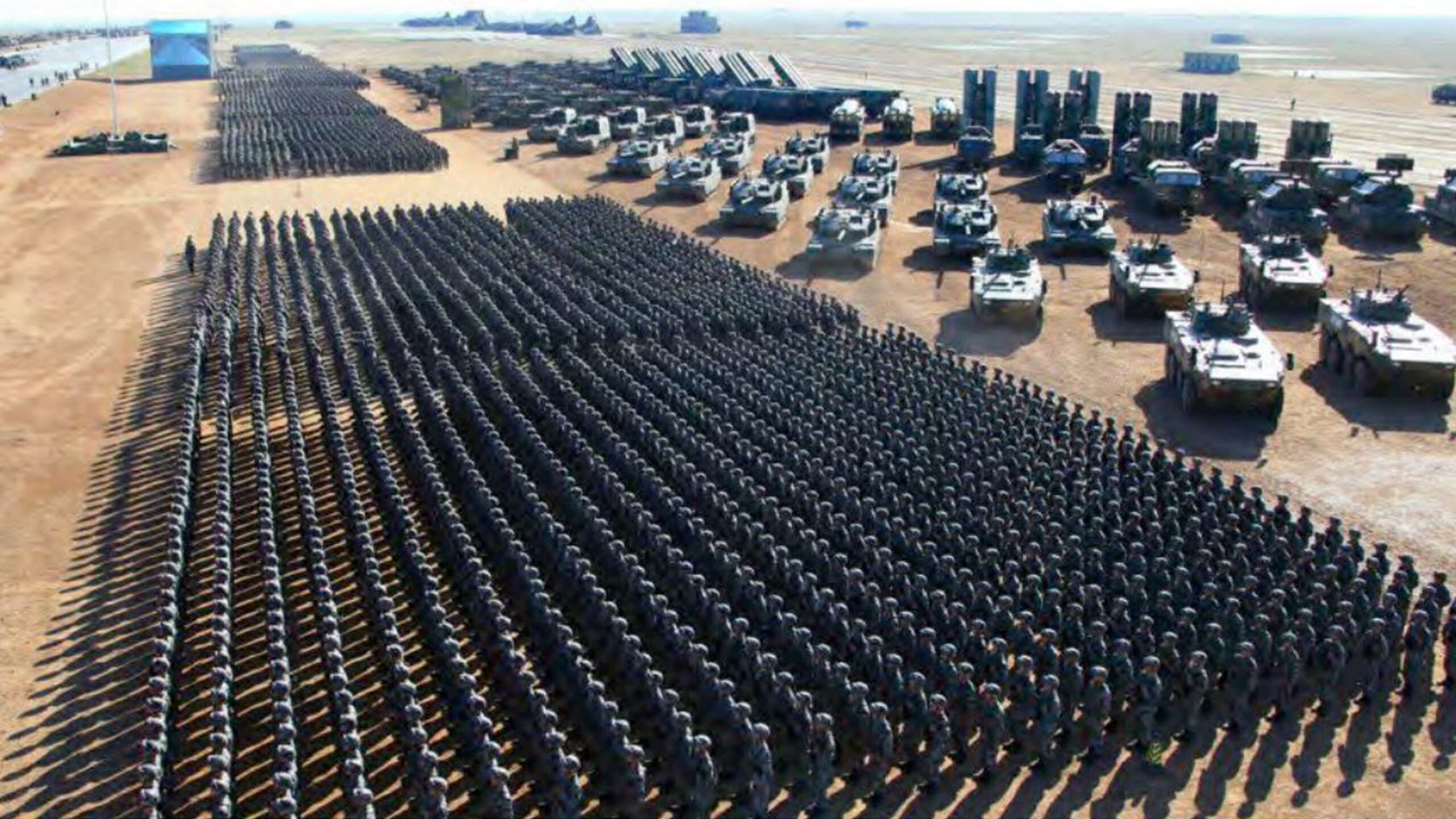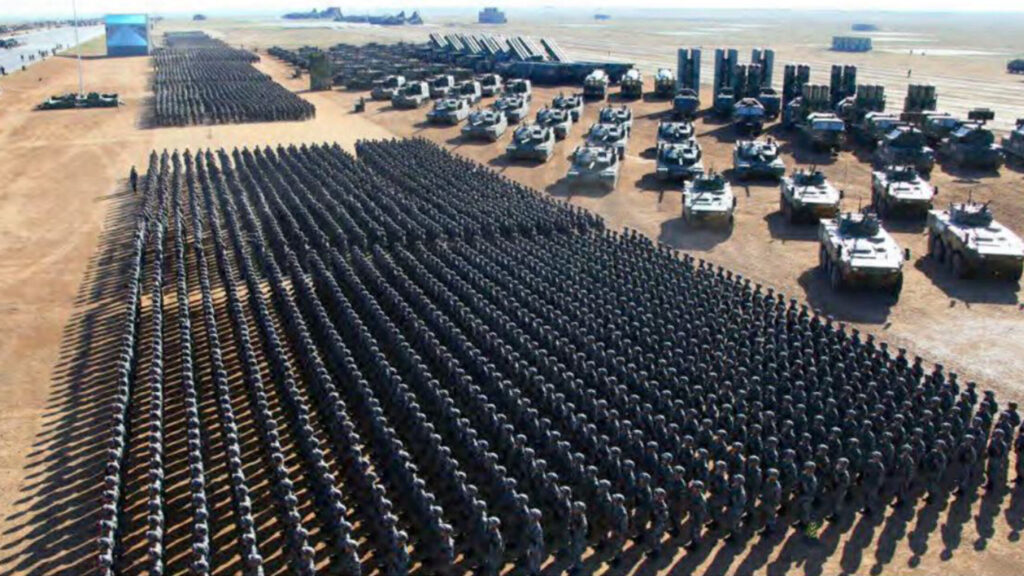Originally Authored at TheFederalist.com

The People’s Republic of China (PRC) is undertaking an unprecedented military buildup aimed at challenging America and its allies, particularly in the Indo-Pacific. And, like Nazi Germany’s buildup in the 1930s, the militarization program ordered by the Chinese Communist Party isn’t simply a great power buildup — it’s a weapon in service of a deadly ideology.
The 2024 Department of Defense China Military Power Report and recent analysis by Bill Gertz in the Washington Times reveal this buildup as part of a broader strategy by the Chinese Communist Party (CCP) to position itself as a global superpower. Meanwhile, the U.S., having spent $5.4 trillion on the global war on terror and attendant, futile nation-building, has left itself strategically vulnerable by diverting critical resources while underestimating the threat from China.
Missile Expansion and Strategic Modernization
China has rapidly expanded the People’s Liberation Army Rocket Force (PLARF) arsenal, adding, that we know of, some:
- 50 new intercontinental ballistic missiles (ICBMs) capable of striking the continental U.S., for a cumulative total of 400.
- 300 medium-range ballistic missiles and 100 long-range cruise missiles.
- More than 600 operational nuclear warheads, projected to surpass 1,000 by 2030.
- Hypersonic missiles like the DF-27, capable of evading U.S. missile defenses and targeting Guam, Hawaii, and Alaska.
- China’s navy, already the largest in the world with 370 ships and submarines, is expected to grow to 435 by 2030.
Cognitive Warfare and Psychological Operations
Beyond its conventional forces, China’s adoption of “cognitive warfare” poses a significant threat. This doctrine focuses on manipulating information to undermine adversaries’ decision-making processes. Cognitive warfare features tactics right out of a sci-fi film, all enabled by powerful AI tools. For instance, deepfakes to mislead military and political leaders during crises and psychological warfare to demoralize U.S. troops and polarize society — the latter including efforts to erode trust in U.S. leadership among regional allies via tool such as TikTok.
PLA researchers are also developing advanced voice synthesis tools for low-cost, high-impact disinformation campaigns. These operations reflect a strategy designed to win conflicts without direct confrontation, targeting the minds of adversaries rather than their forces — Sun Tzu would approve.
Questionable Timelines and Strategic Deception
The CCP’s stated military objectives include readiness for action against Taiwan by 2027, achieving strategic dominance by 2035, and fielding a world-class military by 2049, the 100th anniversary of the CCP’s victory over the Nationalists in China’s civil war. However, these timelines should be treated with skepticism. They are likely deliberate deceptions aimed at lulling adversaries into complacency or disguising China’s actual state of readiness. The pace of China’s missile expansion and cognitive warfare preparations suggests that Beijing’s capabilities likely exceed what is required for these projected milestones.
Unfortunately, the DoD’s China report featured a special section on corruption in China’s military that was seized upon by those who have consistently downplayed the China threat.
America’s Fiscal Crisis and the Need for Budget Reform
While China accelerates its military growth, even as it faces what appears to be a weakening economy, the dire state of American finances threatens our national security. The federal deficit and ballooning national debt place immense pressure on defense spending. To effectively counter China’s ambitions, the U.S. must rebuild its fleet, modernize its nuclear arsenal, expand missile defenses, and restore maritime lift capability. However, this cannot be achieved without serious budget reform and strategic cuts within the Pentagon itself. These necessary actions will likely face strong opposition from some in Congress who seek to defend the status quo.
In short order, President-elect Donald Trump’s national security team must start to rebuild the Navy with more surface combatants, submarines, and support vessels to counter China’s maritime dominance. America’s aging nuclear arsenal requires upgrades to ensure credible deterrence against China’s rapidly growing stockpile of advanced warheads and delivery systems.
Lessons learned from Israel and Ukraine show that we must also invest in next-generation missile defense systems to protect the homeland and key assets in the Indo-Pacific. And, lastly, we must invest in strategic sealift capacity to ensure rapid deployment and sustainment of forces during a conflict. This will require a decade of focused effort to rebuild America’s shipbuilding industry, including training tens of thousands of highly skilled workers.
Finding Savings Within the Pentagon
Despite the need for increased capability, the solution is not simply more spending. The Pentagon’s budget, currently burdened by inefficiencies, mismanagement, and bloated bureaucracy, must be scrutinized. It will be difficult, as every dollar cut will have an advocate as well as friends in Congress, but support for the needed investments will be hard to come by without serious savings in the Pentagon.
Savings can be found in cutting redundant programs and eliminating outdated or overlapping initiatives. Reforming the acquisition process will likely be a big lift as Congress will need to approve enabling legislation, but a proper streamlining of procurement can prevent cost overruns and delays and, if done right, can greatly accelerate weapons acquisition and innovation. And lastly, reducing the DoD’s bureaucracy, including the massive bloat in generals and admirals, will not only save money but also speed up decision-making.
The Strategic Realignment Imperative
China’s military buildup and cognitive warfare strategy are clear indications of its intent to defeat the U.S. and its allies by any means necessary. Ignoring this threat or trusting Beijing’s stated timelines risks leaving the U.S. unprepared for a conflict that may arise sooner than anticipated.
To safeguard national security, the U.S. must adopt a strategy of fiscal discipline and targeted investment. Reallocating resources within the Pentagon to prioritize naval strength, nuclear deterrence, missile defense, and logistics will ensure the United States remains ready to meet the challenge posed by China.
Strategic competition demands both financial responsibility and military readiness — two imperatives that cannot be delayed.
Fortunately, President-elect Trump has assembled a team that understands this threat. With Pete Hegseth at the helm of the Pentagon, and other key positions filled by people who understand the danger and the urgency of the situation, it comes down to whether Congress will join in the effort to preserve peace through strength.
Rephrased from Trump Knows by InfoArmed
